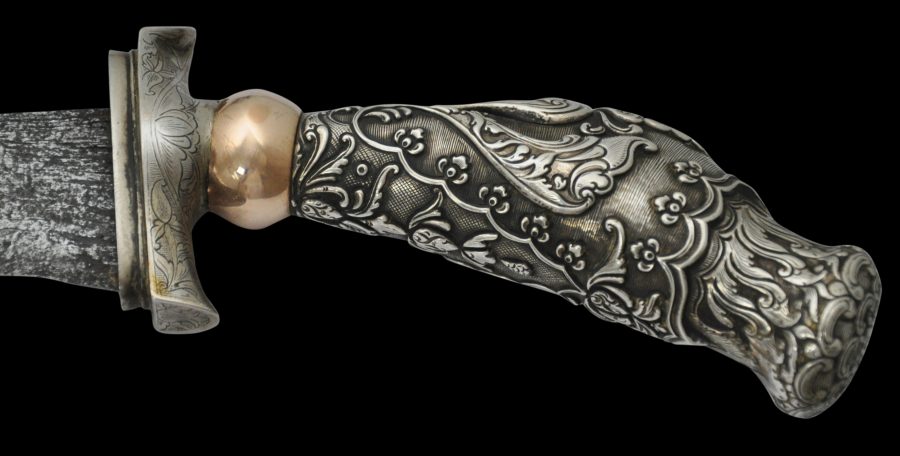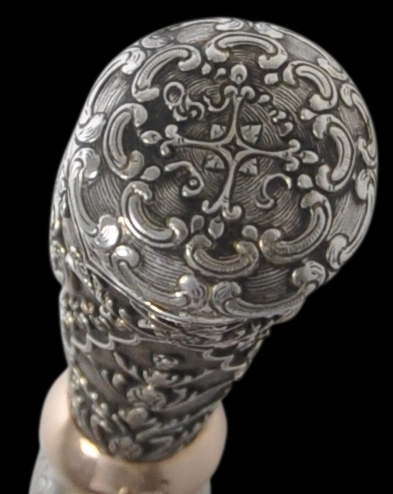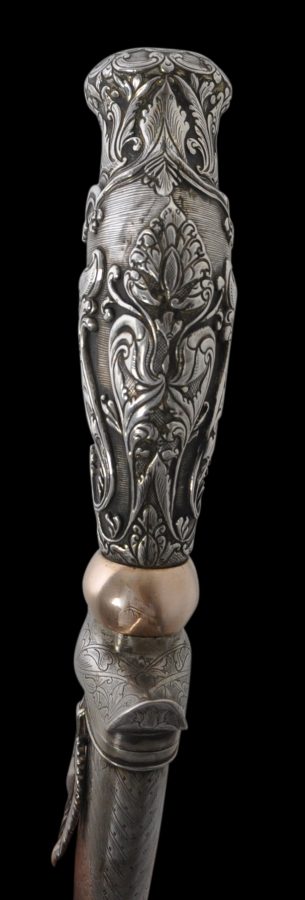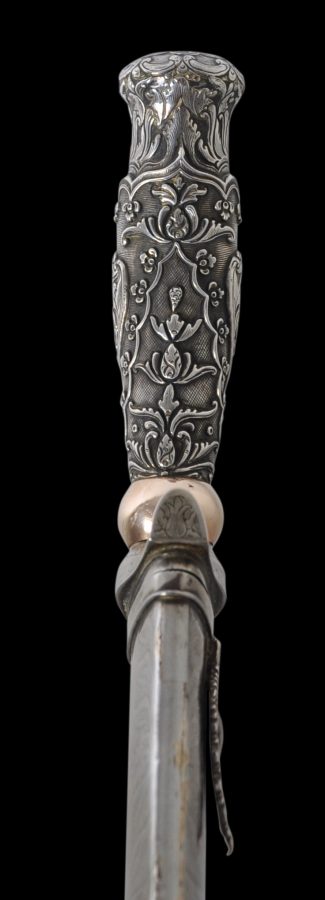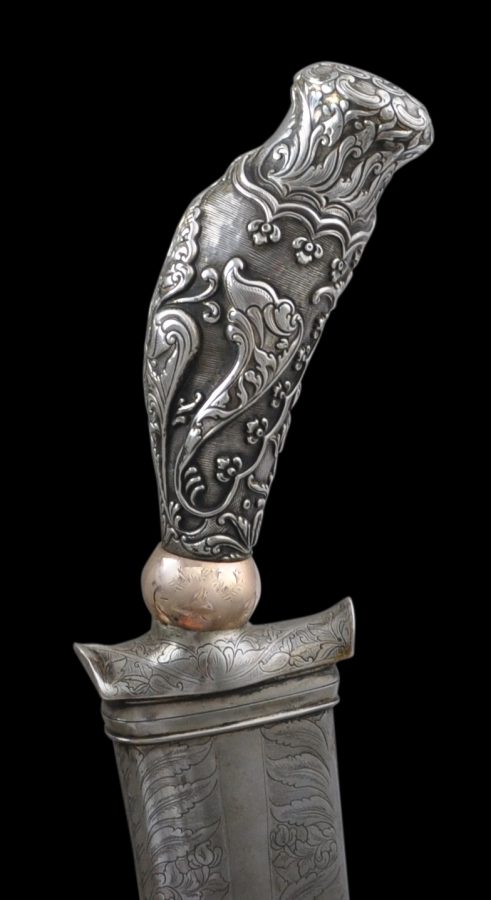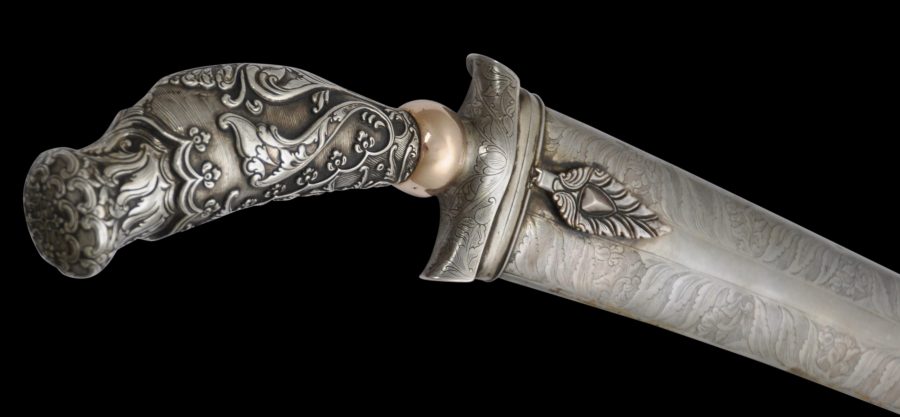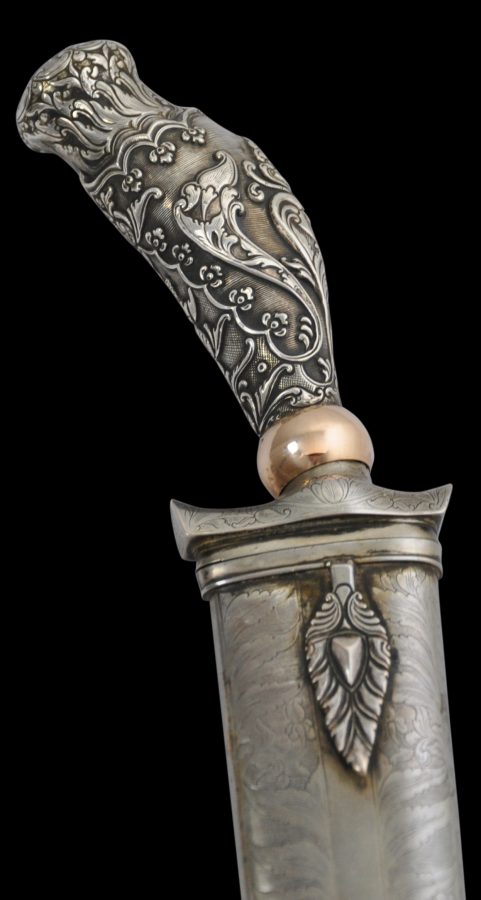Enquiry about object: 4043
Chased & Engraved Pendang Lurus Sword
Java, Indonesia 18th-early 19th century
length: 50cm
Provenance
Scottish art market
This straight bladed sword or pedang lurus represents a fine example of 18th-19th century Javanese silverwork. Also known as a pedang luwuk, the pedang lurus is associated with central Java, particularly Surakarta (Solo) and to a lesser extent Yogyakarta, each being royal centres with kratons (palaces) and flourishing court arts.
The hilt has been cast, chased and engraved in high relief with rococo-inspired leafy and stylised orchid motifs. It is shaped as a stylised kris hilt which in town often are shaped as highly stylised wayang characters.
The pomel is covered in sheet silver and has been lightly etched with foliate and floral motifs.
The hilt ring is of plain rose gold and is likely a later addition.
The scabbard is of plain sheet silver over a wooden base, and is beautifully engraved on both sides with a repeated serrated leaf and flower motiff.
The blade, in watered iron/nickel is straight and otherwise unadorned.
Overall, this is an excellent pedang lurus in a form that is not often encountered.
References
Avieropoulou Choo, A., Silver: A Guide to the Collections, National Museum Singapore, 1984.
Hardianti, E.S. & P. ter Keurs (eds.), Indonesia: The Discovery of the Past, KIT Publishers for De Nieuwe Kerk, Amsterdam, 2005.
National Museum Jakarta, Treasures of the National Museum Jakarta, Buku Antar Bangsa, 1997.
Van Zonneveld, A., Traditional Weapons of the Indonesian Archipelago, C. Zwartenkot Art Books, 2001.



